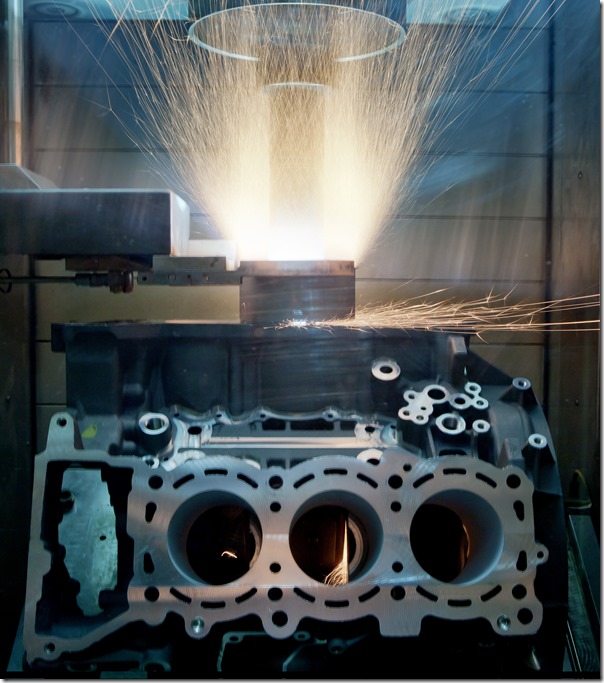Cylinder Coating for Improved Performance
Generally, when OEMs produce aluminum engine blocks (aluminum rather than cast iron because cast iron weighs like cast iron), they insert sleeves into the piston bores—cast iron sleeves.
#aluminum
Generally, when OEMs produce aluminum engine blocks (aluminum rather than cast iron because cast iron weighs like cast iron), they insert sleeves into the piston bores—cast iron sleeves. But not all vehicle manufacturers are doing this.
Daimler, in particular, as it worked in cooperation with Heller Machine Tools to develop an arc spraying process for coating cylinder bore surfaces (and aluminum crankcases) with a process they’re calling “NANOSLIDE.”
This year the company is using it in production of approximately one-million 4- and 6-cylinder engines per year at its facilities in Untertürkheim. (And other OEMs, including Renault and Nissan—which, not coincidentally, are working with Mercedes on engines—are using the process, as well.

The process works by melting iron/carbon wires that are lowered into the bore and then a nitrogen gas flow propels the melted particles (which are as hot as 2000° C) at a velocity of 60 to 80 m/sec.
While the process has been long used for small volumes—Daimler has been working on the process since 1998, when it was using it for AMG engines—Heller has “productionized,” in effect, the process, which it calls “CBC,” for Cylinder Bore Coating.
This is an entire process that is performed on a Heller MC20 machining center.
Entire, as in fine boring, roughening (texturing the surface for the spray), coating, rough honing, finish honing, and finish machining. According to the company the entire process—including block load/unload—can be performed on an eight-cylinder engine within six minutes. Once the coating is applied, an optical sensor, a Jenoptik IPS 100 bore inspector, is lowered into the cylinder and provides a 360° look at the condition of the surface, including any defects or porosities.
So what does this do for an engine?
It is lighter than a liner. Given the frictional characteristics of the surface, it helps improve engine performance, which contributes to better fuel economy. It helps reduce wear in engines over time.

RELATED CONTENT
-
Multiple Choices for Light, High-Performance Chassis
How carbon fiber is utilized is as different as the vehicles on which it is used. From full carbon tubs to partial panels to welded steel tube sandwich structures, the only limitation is imagination.
-
Cobots: 14 Things You Need to Know
What jobs do cobots do well? How is a cobot programmed? What’s the ROI? We asked these questions and more to four of the leading suppliers of cobots.
-
Jeeps Modified for Moab
On Easter morning in Moab, Utah, when the population of that exceedingly-hard-to-get-to town in one of the most beautiful settings on Earth has more than doubled, some people won’t be hunting for Easter eggs, but will be trying to get a good look at one of the vehicles six that Jeep has prepared for real-life, fast-feedback from the assembled at the annual Easter Jeep Safari.


.jpg;width=70;height=70;mode=crop)






